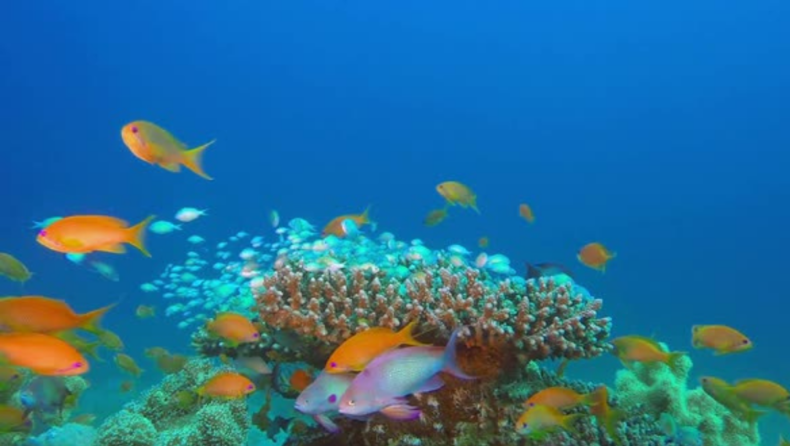India’s mission “Samudrayaan” aims at exploring the ocean as deep as 6000 m, and encouraging the growth of the blue economy in the country.
India has undertaken the mega ocean mission “Samudrayaan” in an effort to unravel the mysteries hidden within the deep sea. The nation plans to deploy a team of experts into the ocean’s depths to conduct numerous deep underwater investigations.
The Samudrayaan Mission aims to create a self-propelled manned submersible that can carry three people and a variety of scientific sensors and tools for deep ocean exploration to a depth of 6,000 metres in the ocean. Its operational endurance is 12 hours, while its emergency endurance is 96 hours.
With a 7517 km long coastline that is home to nine coastal states and 1,382 islands, India is in a unique marine situation. The Blue Economy is one of the ten main dimensions of growth, according to the government of India’s vision for the “New India”.
Oceans, which make up 70 percent of the world’s surface, continue to be essential to human life. The Deep Ocean still has a 95 percent undiscovered area. With the oceans on three of its sides and around 30 percent of the population living along the shore, the coastal regions are crucial to India’s economy. It promotes aquaculture, tourism, subsistence, fishing and the blue trade.
For the exploration of the deep sea, the National Institute of Ocean Technology (NIOT), Chennai, an autonomous institute under the Ministry of Earth Sciences (MoES), has developed a Remotely Operated Vehicle (ROV) with a 6000 m depth rating, as well as numerous other underwater instruments, including the Autonomous Coring System (ACS), Autonomous Underwater Vehicle (AUV), and Deep Sea Mining System (DSM).
In October 2021, India joined the exclusive club of countries with specialised technology and vehicles to conduct undersea activities with the launch of the distinctive ocean mission “Samudrayaan”. Other privileged members of the club include the US, Russia, Japan, France, and China.
Samudrayaan
Union Minister of State Dr. Jitendra Singh introduced the sea exploration initiative, explaining that this niche technology shall facilitate Ministry of Earth Sciences, in carrying out deep ocean exploration of the non-living resources such as polymetallic manganese nodules, gas hydrates, hydro-thermal sulphides, and cobalt crusts, located at a depth between 1000 and 5500 metres.
Underwater tasks such as high resolution bathymetry, biodiversity assessment, geoscientific observation, search operations, salvage operations, and engineering support need the use of underwater vehicles. Unmanned underwater vehicles have enhanced manoeuvrability and great vision systems that resemble direct observation, while manned submersibles provide researchers a sense of their direct physical presence and have stronger intervention capabilities.
Scientists will be able to directly see and investigate uncharted deep-sea regions thanks to this manned submersible. It will also improve the capacity to develop deep sea man-rated vehicles. Five years is the anticipated project timeline, between 2020–2021 and 2025–2026.
The manned submersible vehicle MATSYA 6000 was created domestically. It will make deep ocean exploration easier for the Ministry of Earth Sciences (MoES). It has a finished conceptual design, and work on realising the vehicle has begun. The programme has the cooperation of a number of organisations, including ISRO, IITM, and DRDO, the Union Minister noted.
The Deep Ocean Mission
The Deep Ocean Mission (DOM) was given the green light by the Indian government to be carried out under the Ministry of Earth Sciences over the course of five years with a total budget of Rs 4,077 crore.
The first phase’s projected cost for the three years (2021–2024) is Rs 2,823.4 crore. In order to promote the Blue Economy Initiatives of the Government of India, the Deep Ocean Mission will be a mission-mode project.
The Deep Ocean Mission, which places a focus on the development of deep-sea technology, includes the construction of manned submersibles with a maximum operating depth of 6,000 metres, as well as technologies for deep-sea mining, deep-sea mineral resources exploration, and marine biodiversity.
Development of the Ti Alloy Personnel Sphere, Human support and safety systems in enclosed space, low density buoyancy modules, Ballast and Trim System are some of the important subsystems of the manned submersibles. Others include pressure-compensated batteries and propulsion system, control and communication systems, and launching and recovery systems.
According to the regulations of the International Association of Classification and Certification Society for man-rated usage of manned submersible at a depth of 6000 metres, system design, concept of operation, subcomponent functionality and integrity, emergency rescue, and failure mode analysis are reviewed and certified according to the rules established by them.













